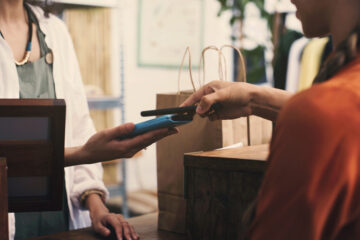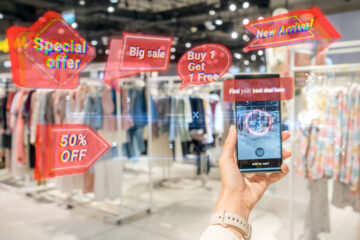Improve the in-store shopping experience while limiting contact

The role of the store has evolved and creating new shopping scenarios that reduce physical contact does not mean losing the unique benefits of shopping in a store. Rather, it allows you to reduce contact where it is not needed so that retailers can focus on other aspects of the business and end up improving the experience of their customers.
The secret is to have a good omnichannel platform that allows you to offer a hybrid experience and thus satisfy the needs of any type of consumer. We now summarize some of the keys to a good hybrid and contactless shopping experience.
Contactless payment
Contactless payments pioneered this new shopping experience and have made traditional credit and debit cards a thing of the past for a growing number of customers.
Juniper Research estimates that annual contactless transactions will rise from $2bn in 2020 to $6bn in 2024.
Today many other options have come into play that allow us to make payments directly from the mobile phone:
- Bank payment apps
- Payment apps built into the phone (Apple pay, Google Pay, Samsung Pay…)
- Paypal
- Bizum
- Twyp
- NFC
Contactless shopping experience
The in-store shopping experience has always had a weak point: lines. Having to wait to enter the fitting room or seeing long lines at the checkout can lead to customers to leave the store because they do not have much time or simply because they do not want to wait.
For that reason, more and more consumers prefer to shop at stores that offer self-checkout (SCO) terminals, which allow them to scan their own products and offer contactless purchase options.
At times of peak instore traffic, such as sales or Christmas campaigns, SCO is a perfect way to optimize store capacity and improve sales agility. Food stores were the first to propose SCO to their customers, but more and more retailers now have this option.
Virtual changing rooms are the next step in eliminating the queues in stores. Companies such as Zara, Massimo Dutti or Nike offer this possibility from their mobile applications. It is also interesting to see the evolution of the case of Aliexpress and its virtual fitting room in its first physical store in Europe, located in a shopping center in Madrid.
There are other ways to avoid queues and reduce contact with clothes in store. For example, size recommendation tools have become essential for fashion brands looking to reduce their returns online, but they can also help the in-store experience by installing touchscreens in stores so that, using size recommendation system, customers do not need to try on so many clothes in the fitting room.
Omnichannel and contactless
Omnichannel and the contactless shopping experience go hand in hand. In this new experience, we cannot limit ourselves to thinking about what happens to customers who enter the physical store for the first time.
There are many online customers who prefer to collect in store to better organize their time, and for this, retailers need to have a good connection between their channels. Store collection, curbside pickup or collection points distributed in cities increasingly necessary options to continue to improve the shopping experience and retain consumers.
👉🏼Read the case study on how BUT, the French leader furniture and home decoration retailing, has adapted to the “low-touch economy” with the Openbravo solution to support Click & Collect and curbside pickup, among other services.



